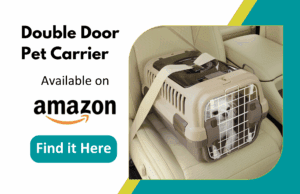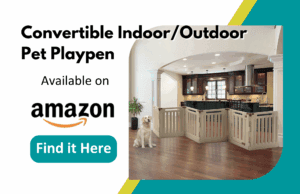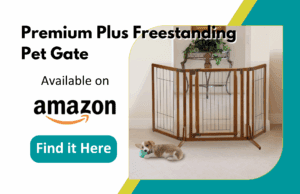
Welcome! As fellow pet lovers, we know that the arrival of Early Fall brings longer days, sunny skies, and the promise of outdoor adventures. We dream of weekend hikes and games of fetch in the park. But as the temperatures climb, that beautiful sunshine can quickly become a serious danger to our four-legged family members. The intense post-summer heat poses a significant threat, and our primary responsibility shifts from planning adventures to providing a safe, cool sanctuary. It’s a time when the most loving thing we can do for our companions is to keep your pets inside.
For many of us, the idea of cooping up an energetic dog or a curious cat for weeks on end sounds like a recipe for chewed-up shoes and scratched furniture. How do we protect them from the heat without sacrificing their happiness and well-being? It’s a challenge we’ve all faced. This isn't just about closing the door; it's about transforming your home into an engaging, comfortable, and secure environment where your pet can thrive, even when the pavement outside is sizzling.
Let’s explore the critical importance of pet safety during hot weather. We will cover the alarming signs of heatstroke in pets, offer practical strategies to keep your pets cool, and provide a treasure trove of ideas for indoor activities for pets that will bust boredom and strengthen your bond. Furthermore, we’ll introduce some smart Richell solutions to make managing your indoor space easier and more effective than ever. Let’s get started on creating the perfect summer staycation for your beloved pet.
Before we dive into the fun solutions, it's crucial to understand why the summer heat is so dangerous for our pets. Unlike humans, who have sweat glands all over their bodies to regulate temperature, dogs and cats primarily cool themselves by panting. They also have some sweat glands in their paw pads, but this mechanism is far less effective. This physiological difference makes them incredibly vulnerable to overheating.
Imagine wearing a fur coat on a 90-degree day—that's the reality for our pets. When panting isn't enough to lower their body temperature, they can quickly enter a state of distress. This is when the risk of heatstroke in pets becomes terrifyingly real. Heatstroke, or hyperthermia, occurs when a pet's body temperature rises to a critical level (typically above 104°F or 40°C), leading to organ damage, brain damage, and, tragically, death.
We once heard a story from a friend about their Golden Retriever, Barney. It was a moderately warm day, not scorching, and they took Barney for a quick game of fetch at a local park. He was having the time of his life, chasing the ball with his usual boundless energy. But within 15 minutes, his panting became frantic, and he suddenly lay down, refusing to move. They rushed him to the emergency vet, where his temperature was 106°F. Barney was lucky; the vet team was able to cool him down and stabilize him, but it was a harrowing reminder of how quickly things can go wrong. See the AVMA's page on heatstroke in animals for more detailed veterinary information.
Certain pets are at an even higher risk. Brachycephalic (flat-faced) breeds like Pugs, Bulldogs, and Persian cats have compromised airways that make panting less efficient. Senior pets, overweight pets, and those with underlying heart or respiratory conditions also struggle to regulate their body temperature. For these vulnerable animals, even a few minutes in the heat can be devastating. This is why our focus must be on prevention and proactive pet safety.
 |
 |
Your home should be a refreshing oasis from the oppressive outdoor heat. The first line of defense is creating a cool environment where your pets can relax comfortably. Fortunately, there are many simple and effective ways to keep your pets cool indoors.
First, leverage your home's climate control. If you have air conditioning, use it. Keep the temperature at a comfortable level throughout the day, especially when you're not home. Fans can also be a great help, as the circulating air can create a cooling effect, particularly for pets lying in the direct path of the breeze. During the hottest parts of the day, draw the curtains and blinds to block out the sun's rays, which can significantly heat a room.
Provide access to cool surfaces. Many pets will naturally gravitate toward tile or hardwood floors, which remain cooler than carpets. You can also invest in a specialized cooling mat. These mats are often filled with a pressure-activated gel that absorbs body heat, providing a chilled surface for your pet to lie on. An elevated mesh bed is another excellent option, as it allows for airflow underneath your pet, preventing heat from getting trapped.
Hydration is absolutely non-negotiable. Your pet needs constant access to fresh, cool water. Place multiple water bowls throughout the house so they never have to go far for a drink. You can make it more enticing by dropping a few ice cubes into the bowl. Some pets are more inclined to drink moving water, so a pet water fountain can be a fantastic investment to encourage hydration.
Finally, don't forget the power of a cool treat! You can freeze low-sodium chicken or beef broth in an ice cube tray to create savory "pupsicles." Filling a Kong toy with a mixture of plain yogurt and peanut butter (check that it doesn't contain xylitol) and then freezing it provides both a cooling snack and a mentally stimulating challenge. These simple actions can make a world of difference in your pet's comfort and safety.
 |
 |
We cannot overstate this point: on dangerously hot days, the best course of action is to keep your pets inside. The dangers lurking outdoors extend beyond the ambient air temperature. Pavement, asphalt, and even sand can absorb the sun's heat and reach scorching temperatures capable of causing severe burns to your pet's sensitive paw pads. A good rule of thumb is the five-second test: place the back of your hand on the pavement. If you can't hold it there for five seconds, it's too hot for your pet to walk on.
Many people think a "quick potty break" is harmless, but even a few minutes of exposure can be risky, especially during peak sun hours (typically 10 a.m. to 4 p.m.). A dog might get distracted chasing a squirrel or a cat may wander onto a hot driveway, and in that short time, their body temperature can begin to climb.
Beyond the immediate heat risk, summer brings other hazards. Certain popular garden plants, like lilies and sago palms, are highly toxic to pets. The warmer weather also brings an increase in parasites such as fleas, ticks, and mosquitoes, which can transmit diseases. By creating a safe and engaging indoor environment, you are protecting your pet from a wide array of potential dangers, making it a cornerstone of comprehensive pet safety.
So, you're committed to keeping your pets indoors, but now you face a new challenge: a bored pet. A lack of physical and mental stimulation can lead to destructive behaviors and anxiety. The good news is that there are countless indoor activities for pets that can keep their minds and bodies active.
For our canine friends, tap into their natural instincts. Scent work is a fantastic game that requires very little space. Hide treats around a room and encourage your dog to "find it!" Start easy and gradually increase the difficulty. Puzzle toys and treat-dispensing balls are also phenomenal tools that make your dog work for their food, providing mental enrichment and slowing down their eating. A gentle game of indoor tug-of-war or fetch with a soft toy can help burn off some physical energy. This is also the perfect time to work on training. A 10-15 minute session teaching a new trick like "roll over" or reinforcing old commands is incredibly mentally tiring for a dog.
Our feline companions also need stimulation. Interactive wand toys that mimic the movement of birds or insects can trigger their hunting instincts in a safe way. Laser pointers can be fun, but always be sure to end the game by landing the dot on a physical toy they can "catch" to avoid frustration. Catnip or silver vine toys can encourage playful behavior.
Think vertically! Cats love to climb, so a tall cat tree or wall-mounted shelves can provide a new world to explore. You can also turn your home into a feline playground by leaving out cardboard boxes or paper bags (with the handles cut off) for them to investigate.
Managing a multi-pet household or simply creating designated "cool zones" can be tricky. This is where high-quality, thoughtfully designed tools become indispensable. When you need to keep your pets inside a specific area for their safety and comfort, having the right gate makes all the difference.
Let's say you have a cat and a dog. You want to keep the dog in the air-conditioned living room, but the cat's litter box and food are in the laundry room. You can't just close the door. This is the perfect scenario for the Richell Cat Gate. This gate is specifically designed with a small, lockable door that allows your cat to pass through freely while keeping the dog securely contained. It allows you to maintain separate spaces without compromising your cat’s access to its essentials, a brilliant solution for harmonious indoor living during the summer heat.
Now, consider another situation. Perhaps you have a large, open-concept living area and you want to block off the kitchen while you're cooking, or prevent two rambunctious dogs from running out the front door every time a guest arrives. The Richell Convertible Elite Pet Gate is a master of versatility. This free-standing gate can be configured as a standard gate to block a doorway, a room divider to section off a large space, or even a self-contained pen. Its quality construction and easy-to-use design provide a secure barrier that is both functional and stylish. It’s an investment in pet safety and peace of mind, allowing you to easily manage your home's layout to suit your needs.
 |
 |
Even when it’s too hot for a walk, pets can still benefit from a bit of fresh air and a change of scenery. The key is to provide this experience in a controlled, safe, and cool way. For small to medium-sized pets, the Richell Indoor/Outdoor Pet Playpen is an exceptional tool for this purpose.
Imagine setting up this playpen on a shaded porch or a covered patio. You can place a cooling mat and a water bowl inside, creating a personal little cabana for your pet. They can enjoy the outdoor smells and sounds for a supervised period without the risk of wandering onto hot pavement or getting overexcited. It's a fantastic way to break up the monotony of being indoors all day.
This playpen is also one of the best indoor activities for pets when you need a temporary, secure space for them. If you're cleaning with chemicals or have workers in the house, you can set up the playpen in a safe room with their favorite toys and a comfy bed. It gives them their own little territory where they feel secure, and you don't have to worry about them getting underfoot. Its adaptability makes it a valuable asset for any pet owner looking to provide a safe and enriching environment, both inside and out.
The summer months don't have to be a time of worry for pet owners. By understanding the real dangers of the summer heat and taking proactive steps, we can create a safe and joyful season for our furry companions. The foundation of summer pet safety is simple: keep your pets inside and keep your pets cool. But it doesn't end there. By providing engaging indoor activities for pets and using smart management tools like the Cat Gate, Convertible Elite Pet Gate, and Indoor/Outdoor Pet Playpen, we can transform our homes into stimulating havens that prevent boredom and strengthen our bond. Let's embrace a summer of safe, indoor fun and make lasting memories with the animals who bring so much love into our lives.
Ready to create a cool, safe, and fun indoor haven for your pets this summer? Explore our collection of premium pet gates and playpens today!
 |
 |
Early signs of heatstroke in pets include excessive and heavy panting, thick or sticky saliva, bright red gums and tongue, and dizziness or disorientation. As it progresses, you may see vomiting, diarrhea, and eventually collapse or seizures. If you notice any of these signs, move your pet to a cool area and contact your veterinarian immediately.
To keep your pets inside and entertained, focus on mental stimulation. Engaging indoor activities for pets like puzzle feeders, scent work games where they have to find hidden treats, and short training sessions to learn new tricks are great ways to tire them out mentally. Interactive toys, like wand toys for cats and soft tug toys for dogs, also help burn off physical energy safely indoors.
Absolutely. The Convertible Elite Pet Gate is an incredibly versatile tool for multi-pet households. Because it can be configured as a wide gate or a room divider, you can easily use it to section off a large room, giving each pet its own safe space. This is ideal for managing introductions or simply keeping a dog away from a cat's food and litter box area.
Please complete this form and click "Submit". Our Customer Support team will gladly address your request and respond in a timely manner.
Richell USA, Inc.
Copyright © Richell, Inc.. All rights reserved